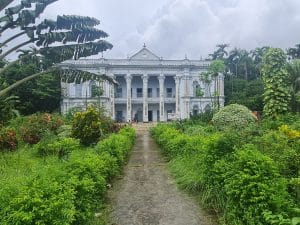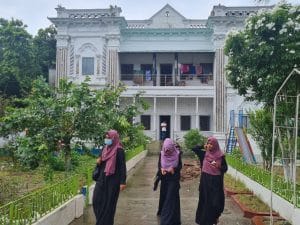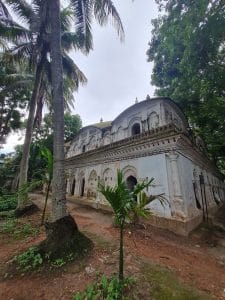Kolakopa, Bangladesh: Judge Bari, Ukil Bari and Anada Kutir—Judge’s House, Lawyer’s House, and the House of Joy—are three grand havelis that stand at the entrance of Dhaka district’s Kolakopa village, showcasing the grandeur that this sleepy hamlet has to offer. Judge Bari never belonged to a judge, nor did Ukil Bari to a lawyer. These havelis have been rechristened by their current inhabitants, who are unaware of their original ownership. All that villagers know today is that this was a village of Hindu zamindars who left their majestic havelis and that East Bengal, the land they once called home, became East Pakistan in 1947. Some left in 1971, when East Pakistan became Bangladesh.
Where history stands still
No travel brochure will point you toward Kolakopa village. No tour guide will take you there either. Bangladesh is dotted with touristy attractions, but Kolakopa has been left out of that list. Most inhabitants of Dhaka are also unaware that history stands still in its breathtakingly beautiful havelis. Expansive buildings with pillars and balustrades, gardens and fountains, dark rooms and airy verandas, these havelis have greyed with the decades, uncared for by successive governments or government servants to whom some have been allocated.

It was quite by chance that Salahuddin Suman, Bangladesh’s top history and travel YouTuber, chanced upon this village and was fascinated by its magnificence. “The Ichamati River flows through Kolakopa. Back in the day, the river must have made this village an important business destination. Goods steamers would dock at the village ferry ghat, and businesses would flourish. The havelis you see here did not belong only to zamindars but also to very rich Hindu businessmen. None of their families have stayed back,” he says.
Salahuddin has been documenting Hindu history in his travel shows. Does he face any pushback when he discovers places like Kolakopa and puts out videos detailing their Hindu past? “My job is to create content by sifting through the pages of history. Wherever I look, I find traces of Hindu heritage. It is a fact [that] what is today Bangladesh was once ruled by many Hindu zamindars. Kolakopa is a prime example of the illustrious past of the Hindus who left this land. If talking about it makes a certain section of viewers uncomfortable, there is little I can do,” he says.
Oral historian Avishek Biswas, who has done his doctoral research on narratives of Dalit Partition survivors, says the havelis were a reason for much of the bloodshed in this part of the world.
Beautiful as they are, these forgotten Hindu havelis stand testimony to the discrimination their original occupants heaped upon their subjects, says Biswas. According to him, the native Muslim population and a large section of lowered-caste Hindus bore the brunt of their excesses.

“They were treated as mlecchas or untouchables. This cultural subordination took a different turn after the Partition and the ensuing communal riots later in 1964 and even during the Liberation War of 1971. Muslims became the majority, and the Hindu zamindars, who had discriminated against them before, had to flee. Some faced horrible deaths. These havelis stand today as reminder of a history of violence,” Biswas adds.
Also read:
Who cares who lived here?
In a tiny lane behind the grand havelis is a 150-year-old shop. It belongs to one Uttam Nag, a Hindu goldsmith, who has gone home for his daily siesta. His assistant, Ranjit Pal, is busy hammering a thin silver necklace into shape. Is he from the village? Pal nods in agreement. Is he aware this was once a village of Hindu zamindars? “Who cares whose village this was? None of them are here anyway. No trace of their bloodline either. If they have forgotten this village, why should we remember them?”

Instead, Pal narrates the story of Khelaram Data, a manobic dakat or dacoit with a heart of gold. A Hindu from this village, Khelaram would rob the rich and give the spoils to the poor. Legend has it that he was a mama’s boy. One day his mother expressed a craving for mango milk. Khelaram filled a large tank in the house with milk and put mangoes in it to ensure that his mother had an endless supply of her favourite drink.
There is a large deserted house that Kolakopa villagers believe once belonged to Khelaram. The tank where he got the mango milk made, though, cannot be found.
(Edited by Zoya Bhatti)






